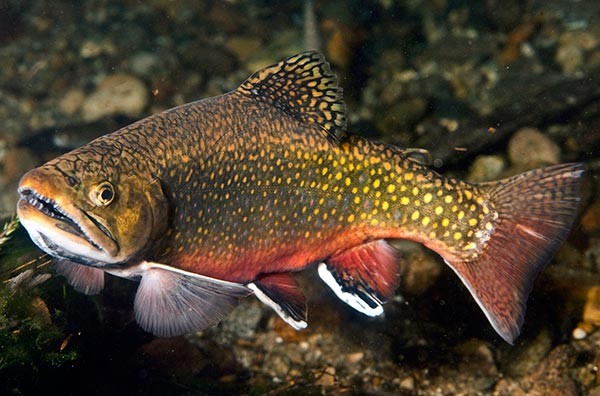
People who fish tend to be poetically inclined – it probably has something to do with the hours spent in silent contemplation. And of all their piscatorial muses, the brook trout reigns supreme. Thoreau referred to them as the painted fish. Burroughs was a lifelong seeker. Perhaps the best recent compliment paid the species was by Cormac McCarthy, who ended his grueling, post-apocalyptic novel The Road – a book about a father and son limping through a ruined, colorless landscape – with the image of brook trout in a mountain stream:
Once there were brook trout in the streams in the mountains. You could see them standing in the amber current where the white edges of their fins wimpled softly in the flow. They smelled of moss in your hand. Polished and muscular and torsional. On their backs were vermiculate patterns that were maps of the world in its becoming. Maps and mazes...In the deep glens where they lived all things were older than man and they hummed of mystery.
McCarthy’s evocation of the world in its becoming is no throw-away sentiment. Brook trout were among the first colonizers back to our region after the last natural apocalypse. As the Laurentide ice sheet retreated between 8,000 and 13,000 years ago, you can imagine these cold water-loving trout at the edge of the melting ice, following the newly fissured streams into the greening hills.
Because brook trout live in water, their life cycle can seem mysterious to us terrestrial beings – which is why we’re happy that people like Robert Michelson exist. Michelson donned a wet suit and braved freezing fall temperatures to show us the brook trout’s mating rituals, then followed up in spring to capture the results of the spawn. Here’s what it looks like down there. –The Editors
Getting the Shot
The eastern brook trout is one of the most beautiful fish I have ever had the privilege to photograph, though capturing these images was a less than beautiful experience.
The saga began with a 2009 trip to northern New Hampshire during Columbus Day weekend – peak spawning time according to biologists from New Hampshire Fish and Game. It was an unseasonably raw day when I left my home in Massachusetts; five hours later, I arrived at the Dead Diamond River in Coös County to find four inches of snow and temperatures in the upper 20s.
I climbed down a very steep embankment with my heavy underwater cameras and snorkeling gear (difficult even in dry conditions) and slipped into the river. It didn’t take me long to see that, on account of the cold, all of the brook trout had left the spawning area early. The following day, I was guided to several other small brooks in the region and found only one three-inch brook trout. A third day was spent diving in a newly restored section of Nash Stream, only to find nothing but more cold water – beautiful area, but no fish!
At this point, I began to panic – where and how was I going to capture spawning? There was a small brook in central New Hampshire with a spawning population of trout that I knew of, so I pinned my hopes there.
Fast forward to the second week in November – it was snowing and very cold. My wife and I had traveled to the stream six times looking for “the shot.” After about four hours in 42° water, I’d lost feeling in the area around my mouth where I was biting down on the snorkel and decided to take a break. My wife, who’d been patrolling the shore, said, “They’re doing something over here. Get back in the water. We are not coming back up here again this year.” Call it luck or the power of wifely persuasion, but shortly thereafter I captured the images you see here.


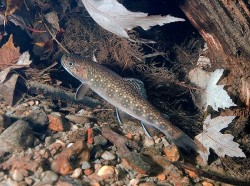
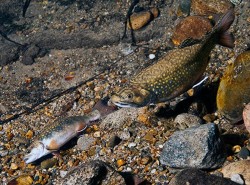
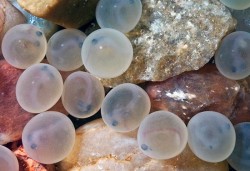
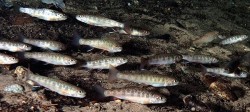
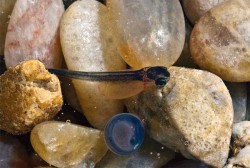
Discussion *